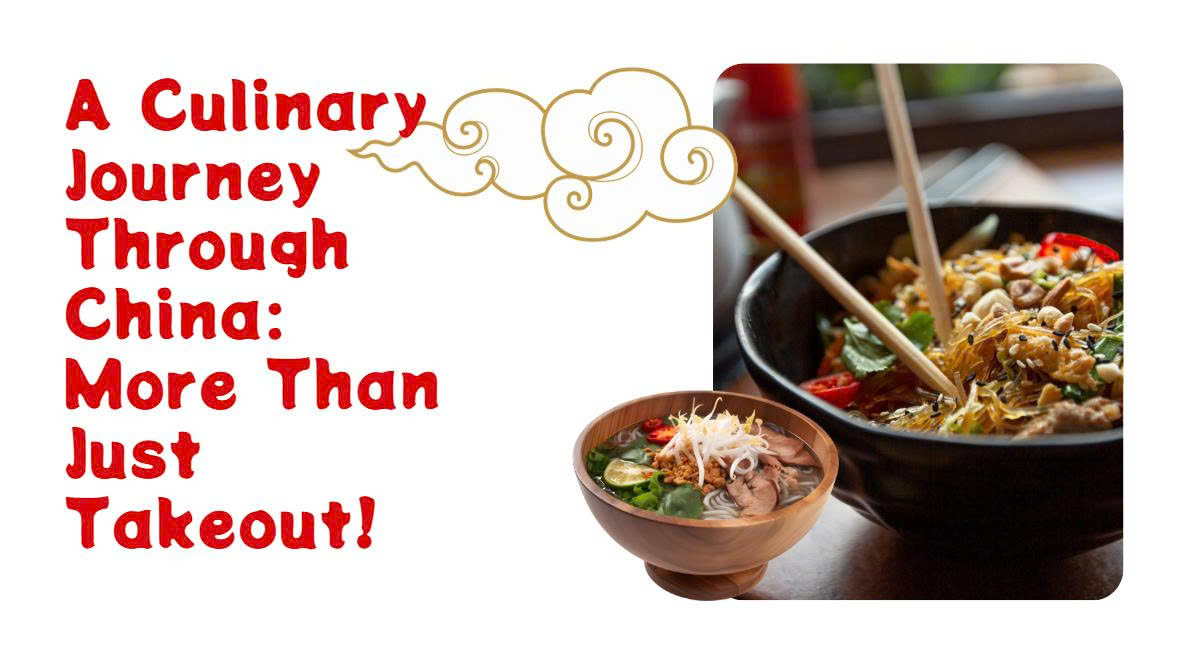When you hear “Chinese food,” what comes to mind? Perhaps sweet and sour pork, spring rolls, or fried rice? While these are delicious staples, they’re just the tip of the iceberg of a vast and incredibly diverse culinary tradition. Chinese cuisine is one of the world’s oldest and richest, boasting flavors, techniques, and regional variations that can mesmerize any food lover.

A Land of Flavors: Exploring Regional Differences
China is a huge country, and its culinary landscape is as varied as its geography. Unlike Western cuisine which often categorizes by main ingredient, Chinese food is often grouped by its regional characteristics. While there are “Eight Great Cuisines,” here’s a simplified look at some prominent styles:
- Sichuan (川菜 – Chuāncài): The Spicy Sensation. Famous for its bold, pungent, and often numbing (málà) flavors, thanks to generous use of chili peppers, garlic, and Sichuan peppercorns. Think of fiery Mapo Tofu or intensely flavorful Kung Pao Chicken. It’s an explosion of taste!
- Cantonese (粤菜 – Yuècài): The Refined and Fresh. Originating from Guangdong province, this is perhaps the most familiar style globally due to emigration. It emphasizes fresh ingredients, delicate flavors, and meticulous cooking techniques. Dim Sum, Char Siu (BBQ Pork), and various steamed seafood dishes are hallmarks of Cantonese cuisine.
- Hunan (湘菜 – Xiāngcài): The Dry Heat. Similar to Sichuan, Hunan cuisine is known for its spiciness, but it’s often a “dry heat” and more purely hot than numbing. Smoked meats and a focus on fresh ingredients are common.
- Jiangsu (苏菜 – Sūcài): The Sweet and Delicate. Hailing from the eastern coastal regions, this cuisine is celebrated for its delicate flavors, precise knife work, and beautiful presentation. Dishes often have a slightly sweet and salty balance, using less oil than other regions.
- Zhejiang (浙菜 – Zhècài): Fresh & Fragrant. Similar to Jiangsu, Zhejiang cuisine emphasizes freshness, tenderness, and mellow flavors. Seafood is prominent, and dishes are often light and fragrant.
- Anhui (徽菜 – Huīcài): Mountain Flavors. Known for its reliance on wild ingredients from the mountains, including wild game, mushrooms, and herbs. Stewing and braising are common cooking methods.
- Fujian (闽菜 – Mǐncài): Seafood & Soups. This coastal cuisine highlights seafood with light, savory, and sometimes slightly sweet and sour flavors. Soups are a strong point of Fujianese cooking.
- Shandong (鲁菜 – Lǔcài): Salty & Crispy. One of the oldest and most influential cuisines, Shandong cuisine is known for its savory flavors, use of seafood, and deep-frying techniques.
Beyond the Wok: Essential Cooking Techniques
Chinese cooking isn’t just about stir-frying! It encompasses a vast array of techniques that contribute to its diverse textures and flavors:
- Stir-frying (炒 – chǎo): The most famous, involving quick cooking at high heat.
- Steaming (蒸 – zhēng): Essential for delicate dishes like fish, dumplings, and buns.
- Braising/Red Cooking (红烧 – hóngshāo): Slow cooking in soy sauce and spices for rich, tender results.
- Roasting (烤 – kǎo): Think of crispy Peking Duck!
- Deep-frying (炸 – zhá): Used for dishes like crispy spring rolls or sweet and sour pork.
- Boiling/Blanching (煮 – zhǔ): Often used for vegetables and noodles.
More Than Just Food: A Cultural Experience
Eating Chinese food is often a communal experience, where dishes are shared family-style from the center of the table. It’s a cornerstone of social gatherings, celebrations, and daily life. The balance of flavors (sweet, sour, salty, bitter, umami) and textures (crispy, tender, chewy, soft) is meticulously crafted in every meal.
So, the next time you’re thinking of Chinese food, challenge yourself to go beyond the familiar. Explore a regional specialty, try a new dim sum item, or delve into a dish that pushes your comfort zone. You might just discover a whole new world of flavor!
What’s your favorite Chinese dish, and why? Share your thoughts in the comments below!